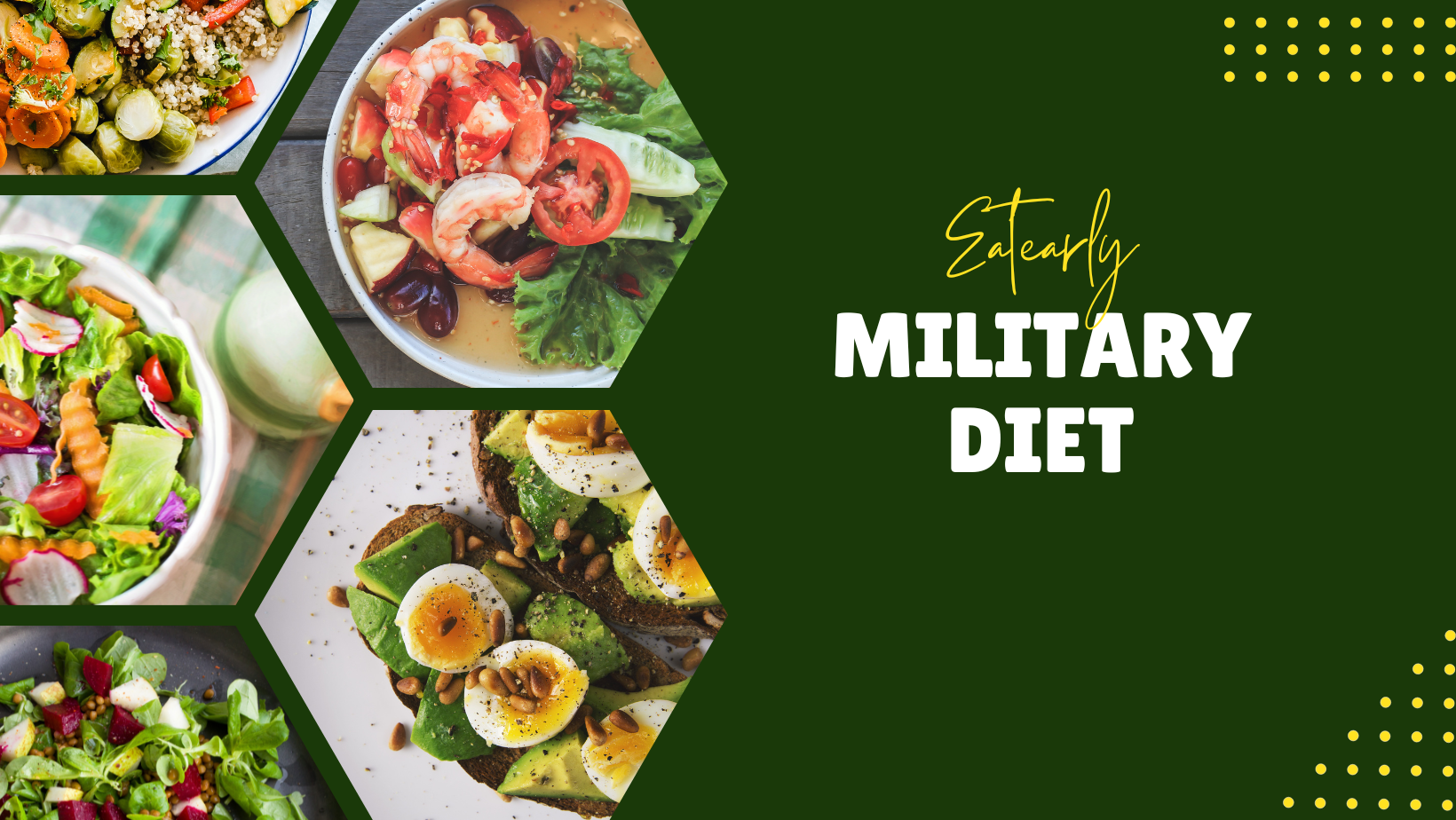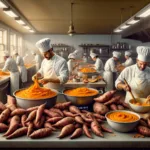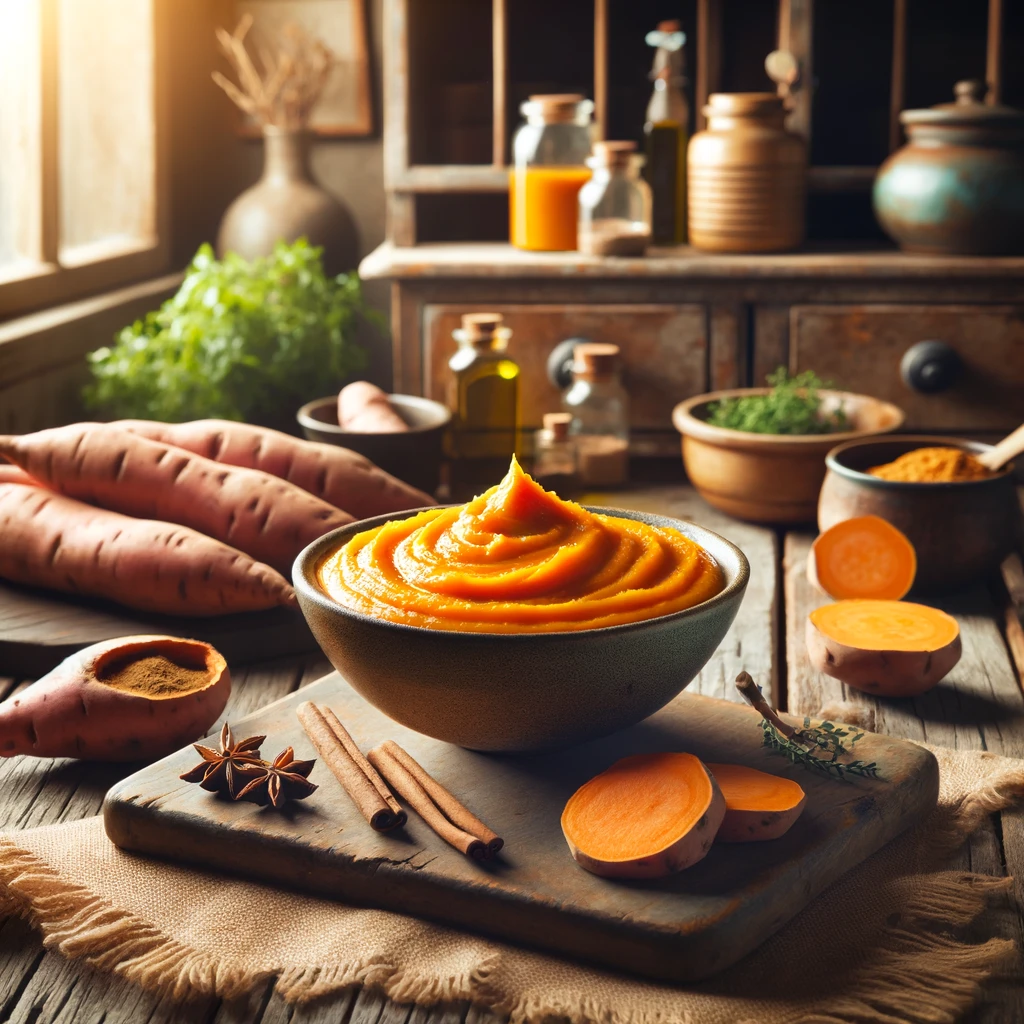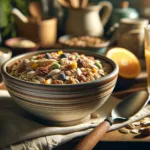Contents
- 1 Key Takeaways:
- 2 Introduction
- 3 Basic Pancake Recipe
- 4 Variations of Pancakes
- 5 Regional Variations
- 6 Healthier Pancake Options
- 7 Savory Pancake Recipes
- 7.1 Pancake Toppings
- 7.2 Pancake Art
- 7.3 Tips for Making Perfect Pancakes
- 7.4 Pancake Perfection: Storing and Reheating Tips for Fluffy Flips
- 7.5 Unique Pancake Shapes and Designs
- 7.6 Pancake Traditions Around the World
- 7.7 Commercial Pancakes from brands
- 7.8 Healthier Alternatives to Traditional Pancakes
- 7.9 National Pancake Day: History and Celebrations
- 7.10 Pancake Festivals Around the World
- 8 Frequently Asked Questions
Key Takeaways:
- Pancakes have a rich history and are beloved worldwide for their versatility and deliciousness.
- There are numerous variations of pancakes, from classic recipes to unique regional specialties.
- Pancakes can be made healthier with ingredient substitutions and creative toppings.
- Savory pancakes offer a delightful alternative to traditional sweet versions.
- Pancake art is a fun and creative way to enjoy this beloved breakfast dish.
- Understanding different pancake traditions around the world adds depth to the pancake experience.
Introduction
Pancakes, those fluffy circles of goodness that grace breakfast tables around the world, hold a special place in the hearts (and stomachs) of many. From their humble beginnings to their current status as a breakfast staple, pancakes have captivated people for centuries. In this comprehensive exploration, we’ll delve into the fascinating world of pancakes, uncovering their history, exploring their many variations, and even discovering some unexpected surprises along the way.
Basic Pancake Recipe
Let’s start with the basics—a simple pancake recipe that serves as the foundation for countless variations. To make classic pancakes, you’ll need:
- 1 cup all-purpose flour
- 2 tablespoons sugar
- 1 teaspoon baking powder
- 1/2 teaspoon baking soda
- 1/4 teaspoon salt
- 1 cup milk
- 1 large egg
- 2 tablespoons melted butter
Instructions:
- In a large bowl, whisk together the flour, sugar, baking powder, baking soda, and salt.
- In a separate bowl, whisk together the milk, egg, and melted butter.
- Pour the wet ingredients into the dry ingredients and stir until just combined.
- Heat a lightly greased skillet or griddle over medium heat.
- Pour 1/4 cup of batter onto the skillet for each pancake.
- Cook until bubbles form on the surface, then flip and cook until golden brown on the other side.
- Serve warm with your favorite toppings.
Variations of Pancakes
- Blueberry Pancakes
- Add fresh or frozen blueberries to the batter before cooking.
- Chocolate Chip Pancakes
- Sprinkle chocolate chips onto the batter once it’s poured onto the skillet.
- Banana Pancakes
- Mash ripe bananas and fold them into the batter before cooking.
- Whole Wheat Pancakes
- Substitute whole wheat flour for all or part of the all-purpose flour in the recipe.
- Gluten-Free Pancakes
- Use a gluten-free flour blend in place of all-purpose flour.
Regional Variations
Pancakes come in many shapes and flavors, depending on where you are in the world. Here are a few notable examples:
- American Pancakes
- Fluffy and thick, typically served with butter and maple syrup.
- French Crepes
- Thin and delicate, often filled with sweet or savory fillings like Nutella or ham and cheese.
- Russian Blinis
- Small and yeasted, commonly served with sour cream and caviar.
- Dutch Poffertjes
- Miniature pancakes cooked in a special pan, traditionally served with powdered sugar and butter.
Healthier Pancake Options
While traditional pancakes are undeniably delicious, there are ways to make them healthier without sacrificing flavor. Consider these alternatives:
- Alternative Flours
- Almond flour, coconut flour, and oat flour can all be used in place of all-purpose flour for a nutrient-rich alternative.
- Less Sugar
- Reduce the amount of sugar in the batter or use natural sweeteners like honey or maple syrup.
- Healthy Toppings
- Instead of traditional syrup, top your pancakes with fresh fruit, Greek yogurt, or a sprinkle of nuts for added nutrients.
- Protein Pancakes
- Elevate your morning routine with protein pancakes—a delicious, nutritious twist on the classic favorite. Packed with protein, these flapjacks will fuel your day and keep you satisfied until lunchtime.
Savory Pancake Recipes
Pancakes aren’t just for breakfast—they also make a satisfying savory meal. Here are a few savory pancake recipes to try:
- Potato Pancakes
- Grated potatoes mixed with flour, eggs, and seasoning, then pan-fried until golden brown.
- Vegetable Pancakes
- Shredded zucchini, carrots, or spinach added to the batter for a nutritious twist.
- Ham and Cheese Pancakes
- Diced ham and shredded cheese folded into the batter before cooking for a hearty meal.
Pancake Toppings
The toppings you choose can take your pancakes from ordinary to extraordinary. Here are some popular options:
- Maple Syrup
- The classic pancake topping, with its rich, sweet flavor.
- Butter
- A pat of butter melting over warm pancakes adds richness and flavor.
- Whipped Cream
- Light and airy, whipped cream adds a decadent touch to any stack of pancakes.
- Fruit Compote
- Cooked fruit, such as berries or apples, simmered with sugar until thick and syrupy.
- Nutella
- A chocolate-hazelnut spread that pairs perfectly with pancakes for a indulgent treat.
Pancake Art
For those feeling particularly creative, pancake art offers a fun and whimsical way to enjoy this beloved breakfast dish. With just a squeeze bottle filled with pancake batter and a hot griddle, you can create intricate designs, from simple shapes to elaborate portraits.
Tips for Making Perfect Pancakes
- Use the Right Batter Consistency: Ensure your pancake batter is not too thick or too thin. It should pour easily but still have some viscosity to it. Adjust the ratio of wet to dry ingredients until you achieve the desired consistency.
- Preheat Your Pan Properly: Preheat your pan or griddle over medium heat before pouring the batter. A properly preheated surface ensures even cooking and prevents the pancakes from sticking or burning.
- Don’t Overmix the Batter: Mix the batter until the dry ingredients are just incorporated. Overmixing can lead to tough and dense pancakes. It’s okay if there are a few lumps in the batter; they will disappear as the pancakes cook.
- Watch for Bubbles: When cooking the pancakes, watch for bubbles to form on the surface. Once bubbles start to appear and the edges look set, it’s time to flip the pancake. Cook the other side until it’s golden brown.
- Keep Warm Until Serving: If you’re making a batch of pancakes, keep them warm until serving by placing them on a baking sheet in a preheated oven (around 200°F or 95°C). This helps maintain their texture and warmth while you finish cooking the rest of the batch.
Pancake Perfection: Storing and Reheating Tips for Fluffy Flips
When it comes to savoring the deliciousness of pancakes beyond breakfast, proper storage and reheating techniques are key to preserving their fluffy texture and mouthwatering flavor. After whipping up a batch of these delectable treats, allow them to cool completely on a wire rack to prevent them from becoming soggy. Once cooled, stack the pancakes with parchment paper in between each layer to prevent sticking, then transfer them to an airtight container or sealable plastic bag. Store them in the refrigerator for up to 2-3 days or in the freezer for longer-term storage.
When the craving strikes for a pancake fix, fear not! Reheating pancakes is a breeze. For refrigerated pancakes, simply pop them in the toaster or toaster oven for a quick and crispy revival. If you’re working with frozen pancakes, thaw them in the refrigerator overnight before reheating, or microwave them for a quick thaw followed by a stint in the toaster for that perfect golden brown finish. With these storage and reheating tips, you can enjoy freshly-flipped pancakes any time of day with minimal effort, ensuring every bite is as delightful as the first flip!
Unique Pancake Shapes and Designs
- Animal Shapes: Use a squeeze bottle to create fun animal shapes like bears, cats, or rabbits. You can add details with chocolate chips or fruit slices for eyes and noses.
- Letter or Number Pancakes: Practice your ABCs or counting skills by pouring pancake batter into molds to form letters or numbers. It’s a fun and educational way to enjoy breakfast.
- Emoji Pancakes: Get creative and make emoji pancakes by drawing different expressions and faces using colored pancake batter. Use food coloring to achieve vibrant hues.
- Stacked Pancake Art: Create edible art by stacking pancakes of different sizes to form shapes like towers, hearts, or even famous landmarks. Use syrup or whipped cream to hold the layers together.
- Geometric Shapes: Experiment with geometric shapes like circles, triangles, or even fractals by pouring batter into specially designed molds or using a squeeze bottle to create intricate designs.
Pancake Traditions Around the World
Pancakes are celebrated in various cultures around the world, often with unique traditions and customs. One of the most well-known pancake traditions is Pancake Day, also known as Shrove Tuesday, which marks the beginning of Lent in many Christian communities. On this day, people indulge in pancakes as a way to use up rich foods before the fasting period of Lent begins.
In addition to Pancake Day, there are numerous other pancake traditions from around the world. In the United States, for example, pancake breakfasts are a popular fundraising event for community organizations. In Japan, pancakes known as “hotcakes” are often served as a dessert, topped with whipped cream and fruit.
Non-Vegetarian Pancakes:
- Bacon Pancakes
- Sausage Pancakes
- Ham Pancakes
- Smoked Salmon Pancakes
- Chicken Pancakes
- Turkey Pancakes
- Crab Pancakes
- Shrimp Pancakes
- Lobster Pancakes
- Duck Pancakes
- Oyster Pancakes
- Tuna Pancakes
- Anchovy Pancakes
- Beef Pancakes
- Pork Pancakes
Vegetarian Pancakes:
- Spinach Pancakes
- Mushroom Pancakes
- Onion Pancakes
- Bell Pepper Pancakes
- Tomato Pancakes
- Corn Pancakes
- Cheese Pancakes
- Spinach and Feta Pancakes
- Zucchini Pancakes
- Asparagus Pancakes
- Artichoke Pancakes
- Eggplant Pancakes
- Broccoli Pancakes
- Cauliflower Pancakes
- Sundried Tomato Pancakes
Vegan Pancakes:
- Banana Pancakes (using flax egg)
- Applesauce Pancakes
- Pumpkin Pancakes
- Coconut Pancakes
- Chia Seed Pancakes
- Vegan Chocolate Chip Pancakes
- Almond Pancakes
- Oatmeal Pancakes
- Blueberry Pancakes (with almond milk)
- Raspberry Pancakes (with soy milk)
- Peanut Butter Pancakes
- Lemon Poppy Seed Pancakes
- Vegan Carrot Cake Pancakes
- Sweet Potato Pancakes
- Cinnamon Pancakes
Commercial Pancakes from brands
- IHOP Pancakes
- Krusteam Pancakes
- Hungry Jack Pancakes
- Buffalo Wild Wings Pancakes
- Cracker Barrel Pancakes
- Jack in The Box Pancakes
- Dunkin’ Donuts Pancakes
- Krispy Kreme Pancakes
- 365 Whole Foods
- Bisquick Pancakes
Healthier Alternatives to Traditional Pancakes
- Oatmeal Pancakes: Replace some or all of the flour with oatmeal or oat flour. Oats add fiber and nutrients to your pancakes, making them more filling and nutritious. You can also blend rolled oats into a fine flour-like consistency for a smoother texture.
- Whole Wheat Pancakes: Opt for whole wheat flour instead of refined white flour. Whole wheat flour retains more nutrients and fiber since it’s less processed. You can also experiment with other whole grain flours like buckwheat or spelt for variety.
- Banana Pancakes: Mash ripe bananas into the pancake batter to add natural sweetness and moisture without the need for extra sugar or fat. Bananas are rich in potassium, vitamins, and fiber, making them a nutritious addition to your breakfast.
- Greek Yogurt Pancakes: Incorporate Greek yogurt into the batter for added protein and creaminess. Greek yogurt not only boosts the protein content of your pancakes but also adds a tangy flavor and helps create a fluffy texture.
- Vegetable Pancakes: Sneak in extra veggies by adding grated zucchini, carrots, or sweet potatoes to the pancake batter. These vegetables add vitamins, minerals, and fiber while also providing natural sweetness and moisture. You can also experiment with savory pancake variations by adding herbs and spices.
National Pancake Day: History and Celebrations
National Pancake Day is a beloved holiday celebrated in the United States, dedicated to the fluffy, delicious goodness of pancakes. While its origins are somewhat varied, the most widely recognized association is with the religious tradition of Shrove Tuesday, also known as Fat Tuesday or Mardi Gras. This day falls on the day before Ash Wednesday, marking the beginning of Lent in the Christian calendar.
Historically, Shrove Tuesday was a day of feasting before the fasting period of Lent. Pancakes became a popular choice for this feast because they were a way to use up rich ingredients like eggs, milk, and sugar before abstaining from such indulgences during Lent. Over time, this tradition evolved into National Pancake Day, celebrated not just for its religious significance but also as a day to indulge in this beloved breakfast staple.
Today, National Pancake Day is observed on various dates depending on different organizations and regions. It’s often marked by pancake breakfasts hosted by community groups, restaurants offering special deals or free pancakes, and families enjoying homemade stacks of pancakes together. It’s a day filled with warmth, sweetness, and the joy of sharing delicious food with loved ones, all while paying homage to the humble pancake and its rich history.
Pancake Festivals Around the World
- Pancake Day in the UK: Also known as Shrove Tuesday, Pancake Day in the UK is celebrated with pancake races where participants run while flipping pancakes in a frying pan.
- Maple Syrup Festivals in Canada: Canada hosts numerous maple syrup festivals where pancakes drizzled with fresh maple syrup are a highlight, celebrating the country’s rich maple syrup production.
- Pancake Festival in Olney, Illinois: Olney hosts an annual Pancake Festival, featuring pancake flipping contests, pancake eating competitions, and various pancake-themed activities.
- Pancake Day in Australia: Australians celebrate Pancake Day with community events and fundraisers, often featuring pancake breakfasts or pancake races.
- Pancake Week in Russia: In Russia, Maslenitsa or Pancake Week is celebrated with the making and eating of blini, thin pancakes served with various toppings like caviar, sour cream, and jam.
- International Pancake Day in Liberal, Kansas: Liberal hosts the International Pancake Day race, where participants race while flipping pancakes, competing against participants in Olney, England.
- Pancake Festival in Buckhannon, West Virginia: Buckhannon hosts an annual West Virginia Strawberry Festival, featuring a pancake breakfast as one of its highlights.
- Pancake Tuesday in Ireland: In Ireland, Pancake Tuesday, or Shrove Tuesday, is celebrated with pancake breakfasts and pancake-themed events in schools and communities.
- Pancake Festival in Sapporo, Japan: Sapporo hosts a pancake festival featuring a wide variety of pancake flavors and toppings, showcasing both traditional and innovative pancake creations.
- Pancake Day in New Zealand: New Zealanders celebrate Pancake Day with community pancake breakfasts and events, often raising funds for charitable causes.
Pancakes are more than just a breakfast food—they’re a culinary canvas, a blank slate upon which to unleash your creativity and explore new flavors and textures. Whether you prefer them sweet or savory, traditional or unconventional, there’s a pancake out there for everyone. So go ahead, flip up a batch of pancakes and savor the simple pleasure of this timeless dish.
Frequently Asked Questions
- What are pancakes made of?
- Pancakes are typically made from a batter consisting of flour, eggs, milk, and a leavening agent such as baking powder or baking soda.
- How do you make pancakes fluffy?
- To make fluffy pancakes, it’s important to use a leavening agent like baking powder and to avoid overmixing the batter, which can result in dense pancakes.
- Can you make pancakes without eggs?
- Yes, you can make pancakes without eggs by using alternatives such as mashed bananas, applesauce, or a commercial egg replacer.
- What is the difference between pancakes and crepes?
- Pancakes are typically thicker and fluffier, while crepes are thin and delicate. Pancake batter also usually contains a leavening agent, whereas crepe batter does not.
- How do you know when pancakes are ready to flip?
- Pancakes are ready to flip when bubbles form on the surface and the edges look set. It usually takes about 2-3 minutes per side.
- What toppings go well with pancakes?
- Popular pancake toppings include maple syrup, butter, fresh fruit, whipped cream, chocolate chips, and nuts.
- Can you freeze pancakes?
- Yes, pancakes can be frozen for later use. Simply allow them to cool completely, then stack them with a layer of parchment paper between each pancake before placing them in a freezer-safe bag or container.
- How do you reheat frozen pancakes?
- Frozen pancakes can be reheated in a toaster, microwave, or oven until heated through.
- Are pancakes unhealthy?
- While pancakes can be high in carbohydrates and calories, they can be part of a balanced diet when enjoyed in moderation and paired with nutritious toppings.
- Can you make pancakes with almond flour?
- Yes, you can make pancakes with almond flour for a gluten-free and grain-free option. Just be aware that almond flour pancakes may have a slightly different texture than traditional pancakes.
- What is the best flour for pancakes?
- All-purpose flour is commonly used for pancakes, but you can also use whole wheat flour, almond flour, or coconut flour for different flavor and texture variations.
- What is the origin of pancakes?
- Pancakes have a long history dating back thousands of years, with variations found in cultures around the world. The ancient Greeks and Romans enjoyed a form of pancake, and they have been a popular food throughout history.
- Can you make pancakes with pancake mix?
- Yes, pancake mix is a convenient option for making pancakes quickly. Simply follow the instructions on the package, which typically involve adding water or milk to the mix.
- What is the best pan for making pancakes?
- A non-stick skillet or griddle is ideal for making pancakes, as it ensures that the pancakes don’t stick and allows for easy flipping.
- Can you make pancakes without milk?
- Yes, you can make pancakes without milk by using alternatives such as water, almond milk, soy milk, or coconut milk.
- What is the difference between American pancakes and European pancakes?
- American pancakes are typically thicker and fluffier, often served with syrup and butter. European pancakes, such as French crepes, are thinner and can be filled with sweet or savory ingredients.
- Can you make pancakes with sourdough starter?
- Yes, you can use sourdough starter to make pancakes for a tangy flavor and added depth. Just be sure to adjust the amount of flour and liquid in the recipe accordingly.
- Are pancakes and flapjacks the same thing?
- In some regions, pancakes and flapjacks are used interchangeably to refer to the same dish. However, in other areas, flapjacks may refer to a denser, chewier type of pancake made with oats.
- What is the best temperature for cooking pancakes?
- Pancakes are typically cooked over medium heat to ensure even cooking without burning the exterior.
- Can you make pancakes without baking powder?
- While baking powder helps pancakes rise and become fluffy, you can make pancakes without it by using beaten egg whites or self-rising flour as alternatives.
- How can I keep my pancakes warm and toasty for a long duration?
- Use a Warm Oven: One of the simplest and most effective ways to keep pancakes warm is by using your oven. Preheat your oven to a low temperature, around 200°F (95°C). As you cook the pancakes, transfer them to a baking sheet lined with parchment paper and place them in the oven to keep warm. The low heat will help maintain their temperature without overcooking or drying them out. Just be sure not to leave them in the oven for too long, as they may lose their moisture and become less fluffy.
- Wrap in a Clean Towel or Aluminum Foil: Another method to keep pancakes warm is by wrapping them in a clean towel or aluminum foil. Once you’ve finished cooking a batch of pancakes, stack them on a plate and cover them loosely with a clean kitchen towel or tent them with aluminum foil. This helps to trap the heat and moisture, keeping the pancakes warm and preventing them from cooling too quickly. However, be mindful not to wrap them too tightly, as this can cause them to become soggy.
- Use a Pancake Warmer: If you frequently make pancakes or entertain guests, investing in a pancake warmer can be a convenient option. Pancake warmers are specially designed containers that keep pancakes warm for extended periods. They usually consist of a base with a heating element and a lid to trap the heat. Simply place the cooked pancakes inside the warmer, and they’ll stay warm and ready to serve until you’re ready to enjoy them. Pancake warmers come in various sizes and designs, so you can choose one that fits your needs and kitchen space.








